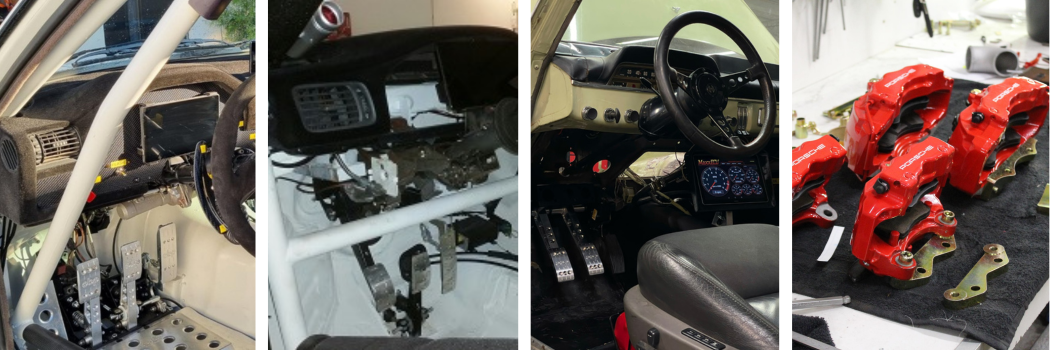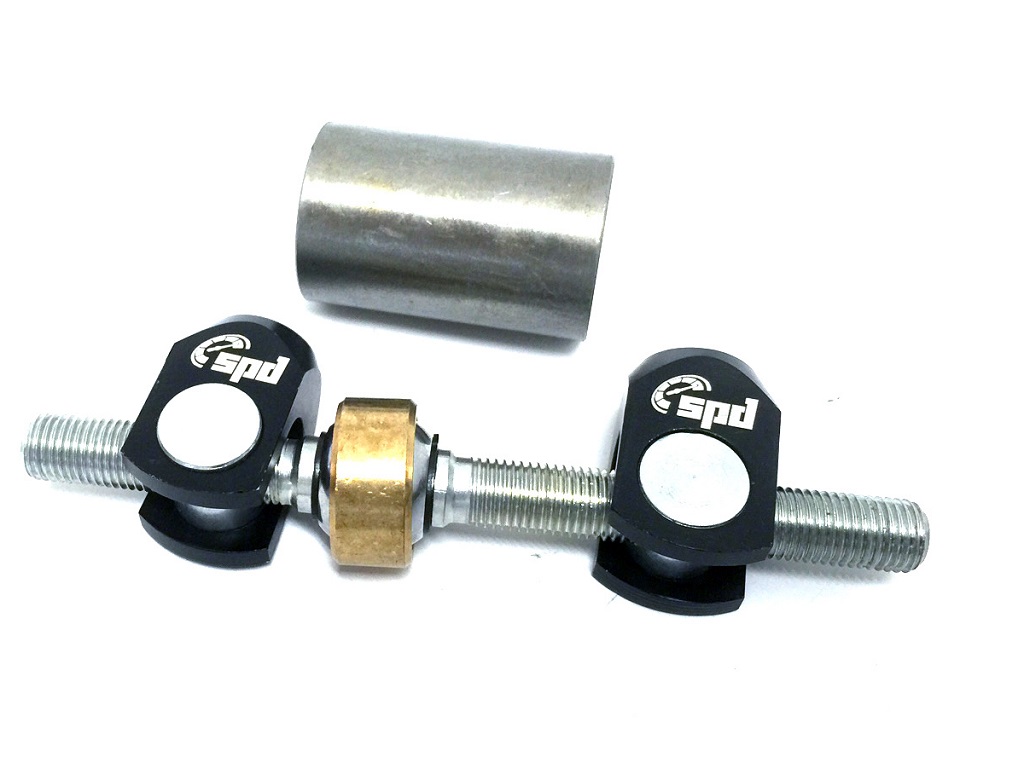Brake Path

Below is basic information to make a brake system with a brake path function effectively.
- Brake Path Function
- Different Types
- Brake Path Adjustment
- Install Brake Path
- Accessories
- Problems
- Compare Pedal Adjustment with Brake Path
1 ▼
Brake Path Function
A brake path is used to adjust the brake balance between the front and rear brakes. It is commonly used in racing and high-performance vehicles where precise control of braking force is important.
A brake path is connected between the brake pedal and the brake cylinders, one for the front wheels and one for the rear wheels. The brake path has an adjustment knob that can modify the braking force applied between the front and rear brake circuits. This allows the driver to fine-tune the vehicle's brake balance to suit their driving style and the conditions of the track.
The brake path replaces the original brake booster.
The brake path contains the following parts:
- Fork 2x
- Nut 2x
- Lock Nut 2x (optional)
- Lock Clips 2x
- Socket 1x
- Bearing 1x
- Pressure Rod 2x
- Adjustment Shaft 1x
- Lock Nut for Pressure Rod 2x
In summary, the brake path is important in a performance/racing vehicle as it allows the driver to fine-tune the brake balance for optimal braking performance.
Washers are often also used between the pedal and the fork. This is to ensure that nothing gets stuck or catches when the brake path and brake pedal are in operation.

2 ▼
Different Types
A brake path is exactly as it sounds, a path that distributes the force between the front and rear brakes. A brake reduction, on the other hand, reduces the force to the brake circuit it is mounted on.
These are the two ways to adjust brake balance/braking force through manual adjustment. This solution is useful when more or less force is needed at the front or rear.
3 ▼
Brake Path Adjustment
In addition to adjusting brake balance with a brake path or brake reduction, various types of products can be used to achieve more or less braking force. Here, we mention only a few without any particular order.
- Brake Pads / Friction
Different types of brake pads are used for the front/rear to adjust brake balance. - Size of Brake Discs / Larger Surface = More Friction
A larger brake disc often means larger brake pads, which in turn means more friction and more braking force. - Size of Master Cylinders
By adjusting the size of the master brake cylinders, you can adjust the braking force through hydraulic leverage. - Size of Pistons in Brake Calipers
Since the size of the master brake cylinders and the piston size in the calipers together constitute the hydraulic leverage, you can also change calipers (alter piston area) to achieve different braking force. - Leverage on Brake Pedal
A higher leverage on the brake pedal means higher brake pressure and thus higher braking force. - Suspension / Soft or Hard
The type of suspension used can significantly affect the adjustment of the braking system and brake path. - Weight Distribution on the Vehicle
The weight distribution of a vehicle is another factor that affects how a braking system is adjusted. - Tires / Friction with the Ground
This is the part that ultimately determines the maximum allowable braking performance in conjunction with the road surface - the maximum friction that can be achieved between the tires and the road surface.
Note the difference between increasing braking force through higher pressure in the braking system or by means of higher friction.
4 ▼
Install Brake Path
When the brake path is installed, there are a few important things to keep in mind.
Install Bearing in the Socket
When installing the bearing in the socket, it should not be loose. It should also not stick when you need to adjust it.
Adjustment of Forks
The brake path connects the brake pedal and the brake cylinders. When pressure is applied to the brake pedal, this is distributed to the master cylinders. More force is applied to the front or rear brake, or when one of the master cylinders is pressed in more than the other, the brake path twists (like a lever). It is rare for this to be straight.
Here it is important that the distance between the fork and the brake pedal is sufficient so that the forks on the brake path do not pinch against the brake pedal/socket in the brake pedal.
The pressure rod on the master brake cylinders should run parallel to each other without angle to ensure the best lifespan/performance and to avoid unnecessary misalignment of the seals.
Install Plastic Washers
For the same reason as above, the brake path/forks move as soon as pressure is applied to the brake pedal. To prevent anything from sticking, plastic washers should be placed between the forks and the brake pedal/socket in the brake pedal. This way, it is ensured that the forks do not stick to the brake pedal.
Test of Braking Force Distribution
Test braking force by drawing lines on the side of the tires and braking on a straight stretch. See which ones lock first. Adjust accordingly. If possible, do the same with a slight turn. Ensure that the rear wheels do not have too much braking force and cause the car to skid.
5 ▼
Accessories
- Adjustment Cable
This is used to adjust the brake balance through a knob without needing to adjust the brake path itself down at the brake pedal. This may be prohibited according to certain regulations during competitions. - Brake Cylinder
- Brake Fluid Reservoir
- Brake Hose
- Fittings
6 ▼
Problems
- Sticking Brake Path
The fork is too tight against the brake pedal/socket, or plastic washers are not installed between the brake pedal and the fork. - No Brake Pressure
Air in the braking system, incorrect size of the brake cylinder, or a leaking braking system are some common causes. - Brake Balance Cannot Be Adjusted
If the brake path is adjusted completely in one direction without achieving the desired brake balance, adjustments in the hydraulic leverage must be made, specifically by replacing the master brake cylinder. The brake path is just a fine-tuning adjustment. Coarse adjustments are made by changing components = adjusting the hydraulic leverage.
▼
▼
-
Brake system
- Brake system: Parts and installation
- Brake bias bar
- Brake distribution valve installation
- Brake fitting - Convex or concave
- Brake fittings (Video)
- Brake fluid information
- Brake pipe flaring
- Carbotech: Choose the right brake pads
- How to bleed your brakes?
- Master brake cylinder: What size should I have on my master brake cylinder?











































